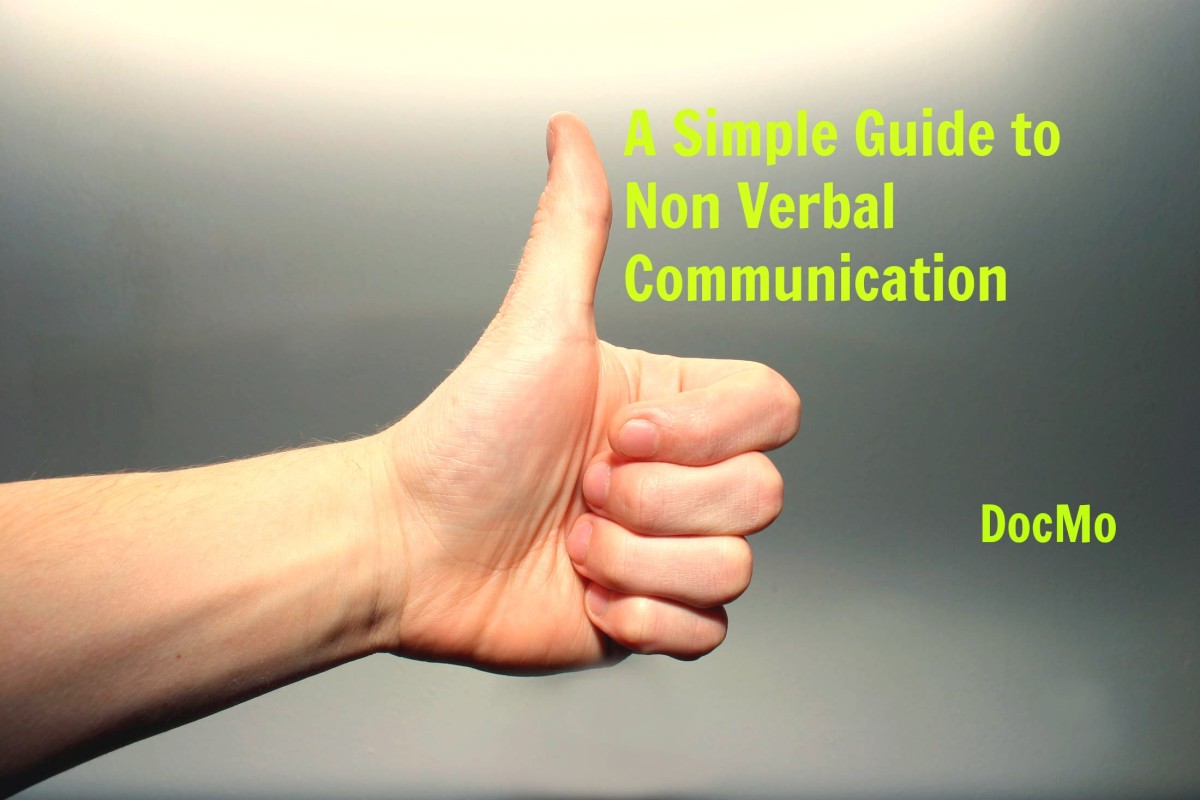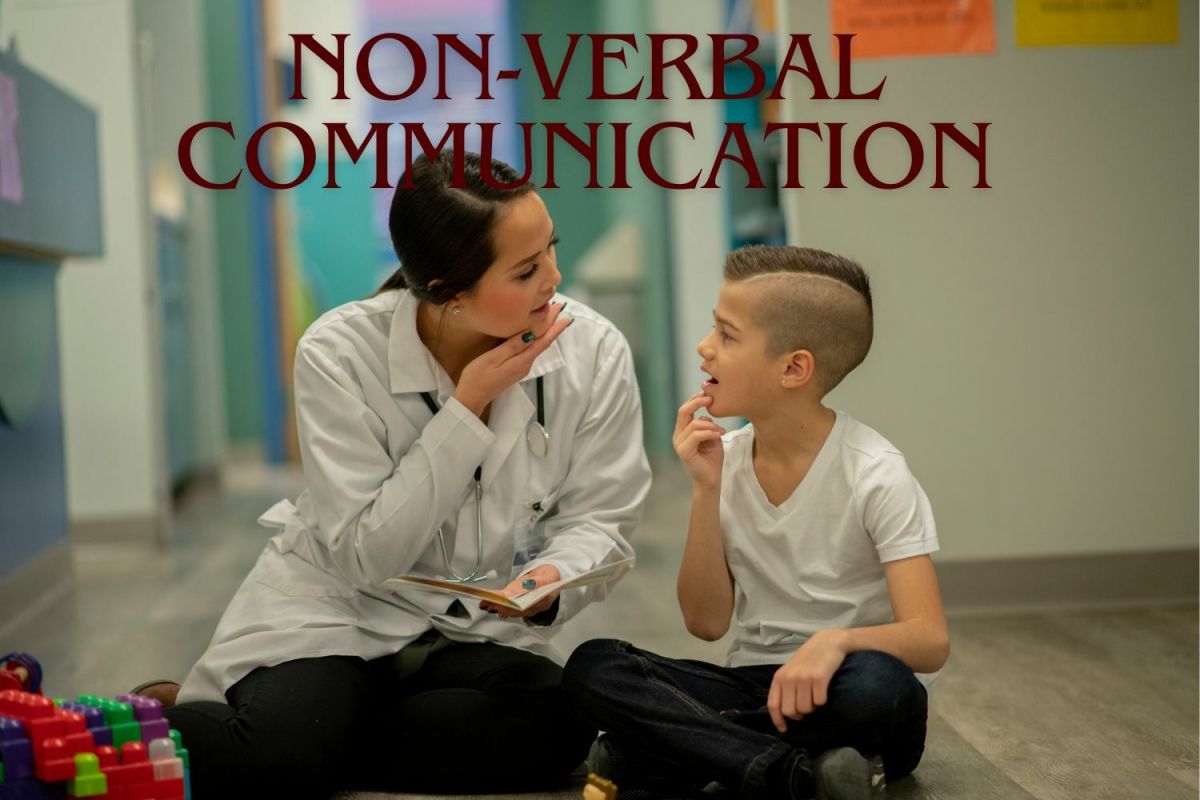Effective Communication Skills: Nonverbal Communication
What Is Non Verbal Communication?
Non verbal communication is all the gestures and facial movements, conscious or unconscious, that a person uses. Raised eyebrows, eye shifts to one side or another, crossed arms, and head nodding are all examples of nonverbal communication.
Nonverbal communication is often an unconscious expression. Even when you understand body language and facial gestures, it is difficult to fake what you are really thinking and feeling.
You read other people's body language all the time, even if you are not aware of it. It's how you know when a person is saying one thing but meaning another altogether. It's how you can sit in a waiting room or airport or mall and get an idea for people's personalities based on how they dress, move, or how close they are to one another.
Body Language Expert Jan Hargrave
Body Language for a Job Interview
Importance of Nonverbal Communication
Have you ever had an occasion where sending a message by email, instant message or text message just didn't feel sufficient? This may be due to the inability of those media to relate the nuances of personal messages because they lack what non verbal communication adds to a conversation.
Using those media, the speaker is also unable to see the listener, meaning the speaker can't always tell how his message was received -- again because nonverbal communication factors are absent.
Chances are you've written at least one text message or post in social media that you meant as harmless humor, but because no one can read the inflection in your voice or see you facial expression, the message was received as snarky. This likely wouldn't have happened if you were talking to someone in person.
A telephone call is a little better. Both parties can hear vocal clues to both the messages and the receipt of those messages.
But it's hard to beat face-to-face or audio-video communication to get the complete communication experience. Language experts estimate that 65 to 90 percent of communication is via non verbal communication.
How Good Are You at Reading Body Language?
Types of Non Verbal Communication
There are six major elements that comprise the total of nonverbal communication: Voice, eye contact, facial expression, touch, gestures and space.
Voice The inflection of your voice, its tone, volume -- even how fast or slow you speak -- all factor into how your message is received.
Eye Contact Are you glaring at the other person, casting your eyes downward as you speak, or looking at the other person with interest as the two of you interact?
Facial Expression Remember the seven basic emotions understood through facial expressions -- and consider how many other emotions can be read in someone's face.
Touch Touch isn't always involved in conversations, but when it's present, you can tell a lot from the type of touch and its delivery. If a friend greets you warmly with what she says, but hugs you like you're a wet fish, it might give you reason to doubt her sincerity. And we've all shaken hands with someone with a limp grip and felt a bit disconcerted afterwards.
Gestures Do you talk with your hands? Point at someone across the aisle? Show size with two fingers? Some gestures are conscious efforts on our part and others happen unconsciously; they all add to the "flavor" of our messages.
Space You can tell a lot about the relationship between two people by the amount of space between them. Good friends are closer in proximity to each other than are adversaries or strangers who are talking. Be careful not to invade the other person's personal space when communicating or you may send the wrong message.
Dr. David Matsumoto
Universal Nonverbal Communication
David Matsumoto, Ph.D., who, among other things is a professor of psychology at San Francisco State University and director of Humintell, has performed extensive research to determine what nonverbal cues are recognized universally.
What he and other experts in the field of interpersonal communications have found is that there are seven basic emotions that are shown by facial expression that are recognized the world over: anger, joy, sadness, disgust, fear, contempt and surprise.*
Matsumoto suggests that all humans are born with the knowledge of how to express these basic emotions. He has studied people who have been blind from birth, unable to learn the facial expressions by visualizing them, and has noted the use of the same facial expressions of these emotions as sighted individuals.
Almost all other nonverbal communication is unique to each culture. Consider the hand shake, the Western world's universal sign of introduction and greeting. In some Eastern cultures, such a gesture might be considered offensive because a bow from the waist is used in greeting there.
*http://www.apa.org/science/about/psa/2011/05/facial-expressions.aspx
Hubs on Related Topics
- Helpful Listening and Responding: Effective Communication with Children
- The Power and Persuasion of Nonverbal Communication
Increase your competency with nonverbal communication. Discover the power and persuasion of body language in your communication. - The English Language: Nonverbal Communication
Resources
- Non Verbal Communication Program
Program to aid in nonverbal communication in business - Nonverbal Communication: Improving Nonverbal Skills & Reading Body Language
Learn about the power of nonverbal communication and body language in communicating with others and building strong relationships. - Verbal and Nonverbal Communication
Buffalo State University Unit 2 Communications








